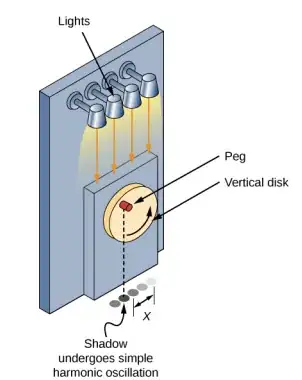In another question evaluating the reality of length contraction, the circular motion was involved and some answers argued that centrifugal force would negate any possible length contraction. A famous paradox called "The Ehrenfest Paradox" analyses a similar situation with relativistic motion in a circle and it suffers from the same criticism.
The effects due to centrifugal motion in a circle (as far as length contraction is concerned) can be removed by considering the following thought experiment. A large circular wall is constructed and a railway track is built on the inside vertical surface of the wall. In fact, the wall can be built in a pit dug in solid granite, to support the wall and the wall is made of the toughest materials known to man. The idea is that the radius of the track is not allowed to increase to any significant extent.
Initially, trains are placed on the track one at a time, each linked to the next by a short spring, until the track is completely filled with connected trains.
Now the trains are accelerated to relativistic speed. SR seems to predict the trains will length contract according to the observers at rest with the track and the connecting springs (made of lower tensile strength material) will be stretched.
One of the answers in the other thread contradicts this conclusion, saying from the point of view of the passengers on the trains the track is length contracting. He implies that since both cannot happen at the same time, neither the track nor the train length contracts and the gaps between the trains will not increase.
How is this paradox resolved? What is the explanation for what is going on and what will actually be observed? How do the observers on the trains explain why the gaps between the trains increased and the springs were stretched if that is what happens?
Please don't say SR cannot analyse this and GR is required. The train is operating in essentially flat spacetime and SR can cope with circular motion and acceleration.
In summary, what actually is measured to happen and how is it explained?
Additional note: For clarity, I intended the trains to be accelerated to a final constant velocity in a Born rigid manner, such that the trains maintain a constant proper length as measured by observers at rest in the trains.
Edit: This part is transferred and paraphrased from the comments to avoid an extended discussion there: Consider a slight modification, this time without any connectors. Lets say the trains are accelerated to a velocity such that they are measured to contract by about 50% and then maintain that constant speed. On the roofs of the trains are poles that are the same length as train.
When the train is at constant speed, the passengers can feed these poles into the gaps between the trains so that they fit snugly without any (parallel to the track) stress or strain on the poles or the trains. Now we could have a collection of objects with a total rest length equal to twice the rest length of the track, yet fitting into a circumference equal to the rest circumference of the track. This would seem to indicate that something really has contracted relative to the other. (Let me know if this second part should be moved to its own separate thread.)
